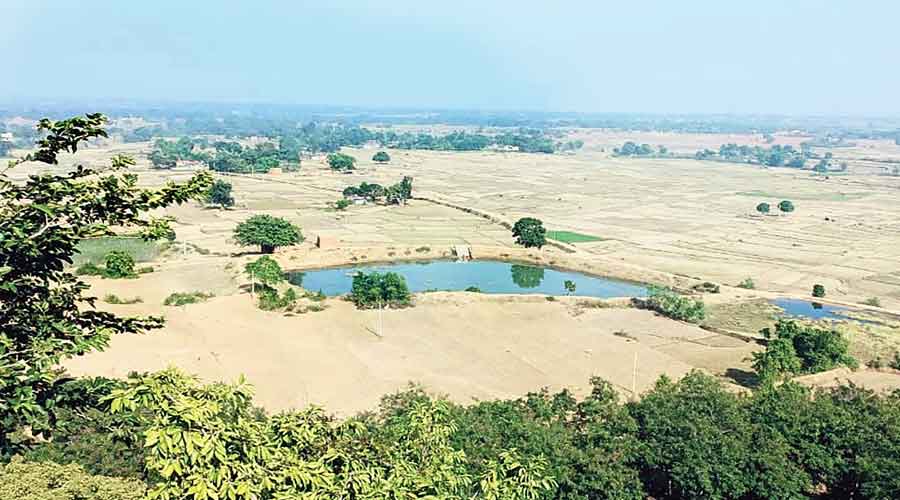Even as people across Jharkhand celebrated Holi with full revelry after a two-year pause because of the Covid pandemic, one village in Bokaro district, some 150km from capital Ranchi, did not play with colours on the auspicious day.
Over 7,000 residents of Durgapur village under the Kasmar block of Bokaro district did not touch colour or indulge in any sort of celebration on Friday, fearing natural calamity and to continue with an over 300-year-old tradition.
Former mukhiya of Durgapur village Amarlal Mahato, 45, said: “It has been a tradition since ages, almost 300 years back when the local king Durga Prasad Deo (king of Manbhum) and his family were assassinated by Padma (Hazaribagh) king Daler Singh on the day of Holi festivity in the 18th century. The king was respected and looked upon as a saviour by the local villagers and used to help the villagers.
“Since then, the villagers observe Holi as a day of condolence and not celebration. There is a belief that those who defy the tradition have been struck by the spirit of the king facing deaths and natural calamities and epidemic.”
The mukhiya said that a few animal traders from other villages had come to their village and celebrated Holi some 100 years ago.
“The animal traders celebrated Holi and legend has it that on the same night, they died of disease. There were deaths of villagers who had played Holi with the animal traders,” said Mahato.
Durgapur village has nearly 12 tolas and comes under Durgapur panchayat. The panchayat has three revenue villages namely Durgapur, Rangamati and Kurku out of which Durgapur is the biggest and houses the panchayat office.
“The village comprises both Mahatos (original landholders) and Santhal tribals and few Muslims. Most of the villagers are dependent on agriculture and few migrate to big cities for jobs,” said Nageshwar Mahato, a villager.
However, there is a divergent view among another section of villagers on not celebrating the festival.
“The entire village is nestled underneath the Badrao Baba Hills, which is considered sacred by the locals and it is believed that Badrao Baba, the local deity, does not like colours. In fact, only white flowers are offered to the deity and even white goats and chickens are offered as sacrifices as locals believe that Badrao Baba does not like colours. So people do not play with colours over fears that Badrao Baba would get annoyed and result in epidemic and diseases in the village,” said former sarpanch of the village Badruddin Ansari.
He also recalled that they have heard from their parents that in the 80s some youth of the village had disobeyed their parents and played with colours.
“On the very night the youths were afflicted with diseases and died…. Even domesticated animals died in large numbers in the village in that year. It was only after worship and sacrifices before Badrao Baba on the Hills that the deaths stopped,” said Ansari.
However, he added there was no restriction on people going to another village and celebrating Holi.
Most of the youths of the village go to their relatives’ houses in other villages to observe the festival of colour.










